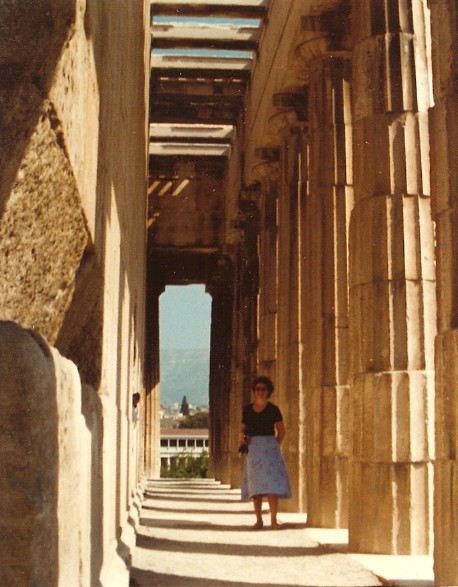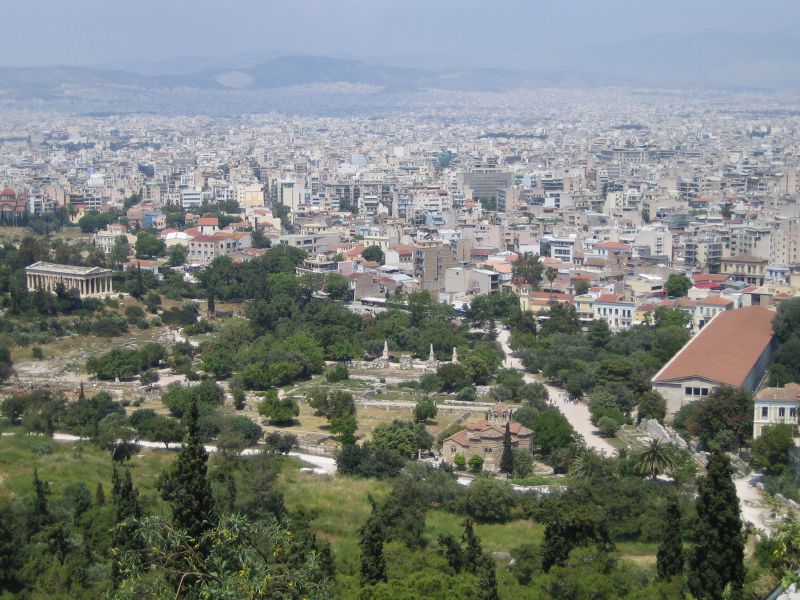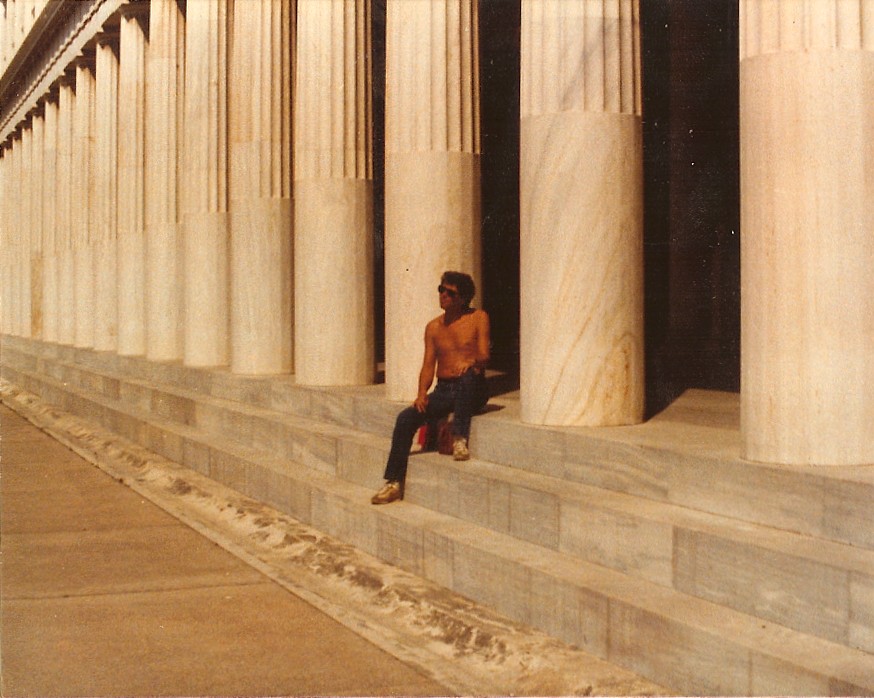 down the coast, Athens to Sounion |
Cape Sounion, Patroklou in the distance |
 Cape Sounion at sunset |
 Moonrise over the Temple of Poseidon |
We got up about 6:30, got cleaned up and went for a short walk before breakfast, which we shared with Rosemarie Lindahl and Viginia Hunn, both from Indiana.
Left at 9:00 on a bus tour headed for Cape Sounion down the west coast of Attica, along the Aegean Sea, over what is now National Road (Interstate) 91. Rode through many summer resort towns south of Athens. Sounion was a delight. A very fresh breeze was blowing. We saw the temple of Poseidon, one of the most photographed ancient temples in the world. You can see why once you visit it. It's definitely a ruin, and an isolated, lonely one at that. But there's a magic about the place ... once a distant-early-warning system for alerting the Athenians to arrivals by the dreaded Persians, using a series of signals (sempahores by day, fires by night), which brought that message instantly from this southeasternmost point. The Wikipedia article on Sounion is well worth a look.
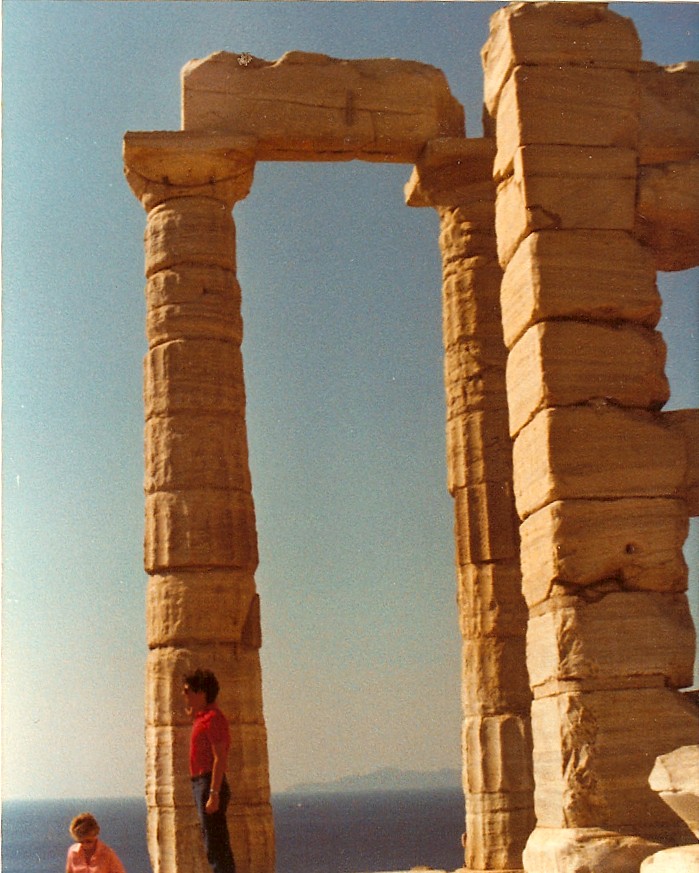 me looking for Persians |
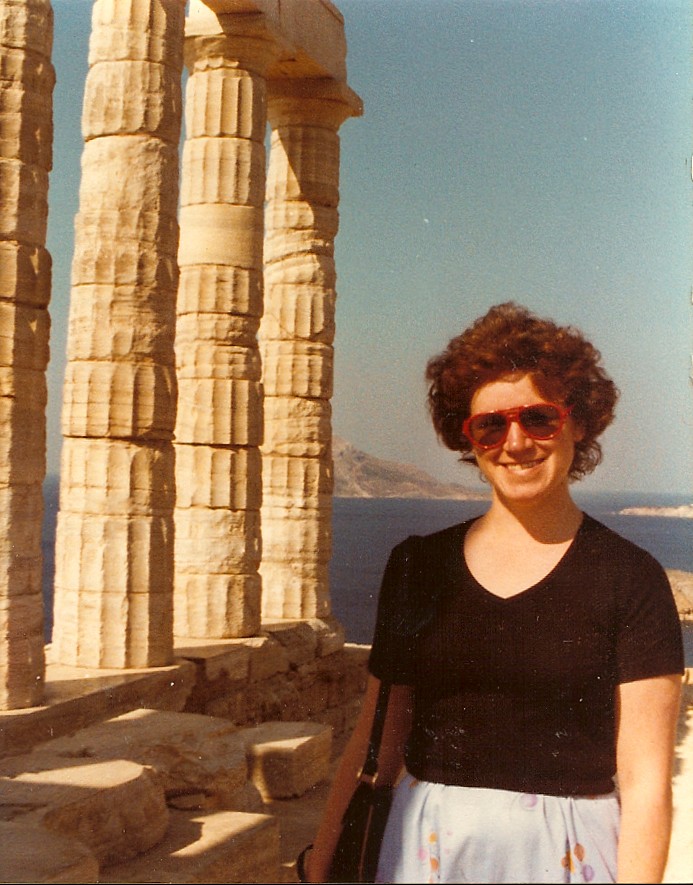 Karen at the Temple |
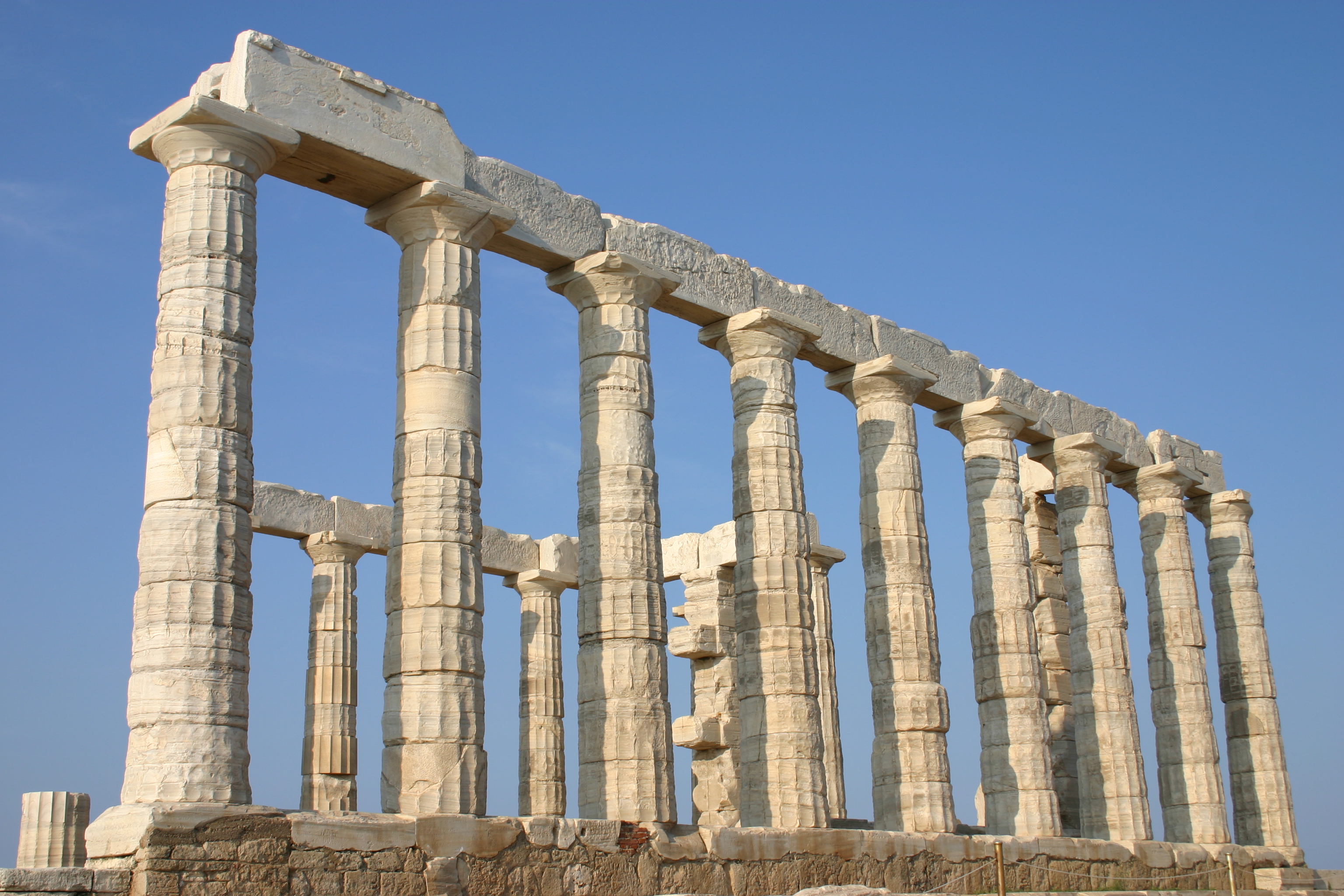 Temple of Poseidon at Cape Sounion |
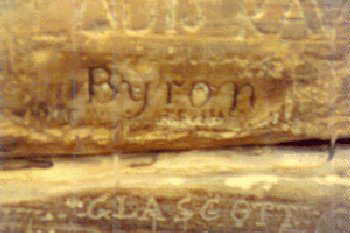 Lord Byron's carved graffito, 1910 |
 Byron in Albanian dress |
Returned to town -- went to the Oasis for something to drink and a sandwich. Karen felt a bit bad from too much sun on the way back, but gradually recovered. We walked to the Theatre of Dionysos, below the Acropolis. What a neat place, very quiet, hardly anyone about (it was very much as in the picture show here ... very warm and totally empty). There's a good Wikipedia description of Greek theatre; there's a brief article on this theatre in particular. I recalled from my high shool course in architecture appreciation that Greek theatres had a point in the center of the stage which was actually the focus of the amphitheatre, in physics literally the focus of the parabolic seating arrangement. Originally it was the location of the thumele (sacrificial altar). Sure enough, there was a circular stone just in the middle of the stage (I no longer remember its name). When I stood on it and spoke, everything I said was immediately echoed and magnified. How terrifying it must have sounded when voices were projected through amplifying masks on that spot!
 Theatre as it was when we visited |
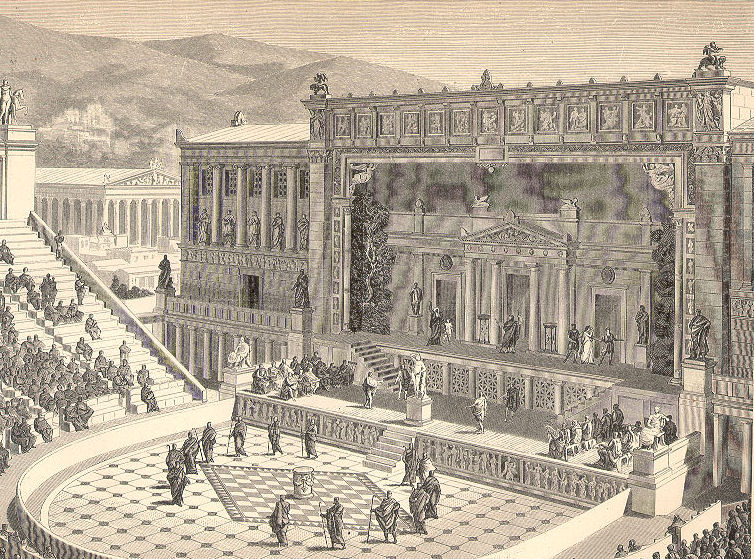 as it was originally |
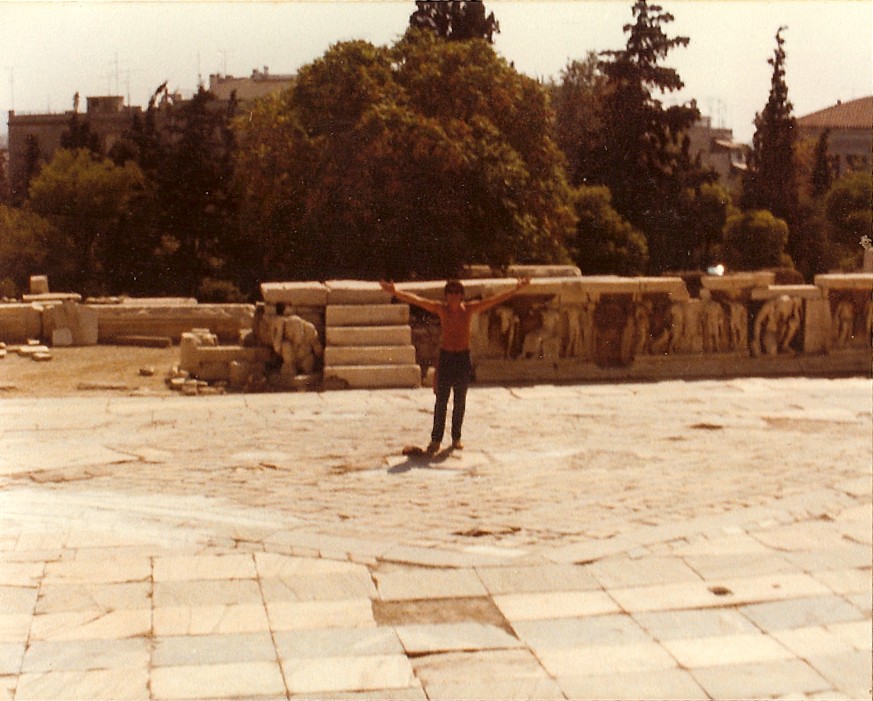 me testing acoustics |
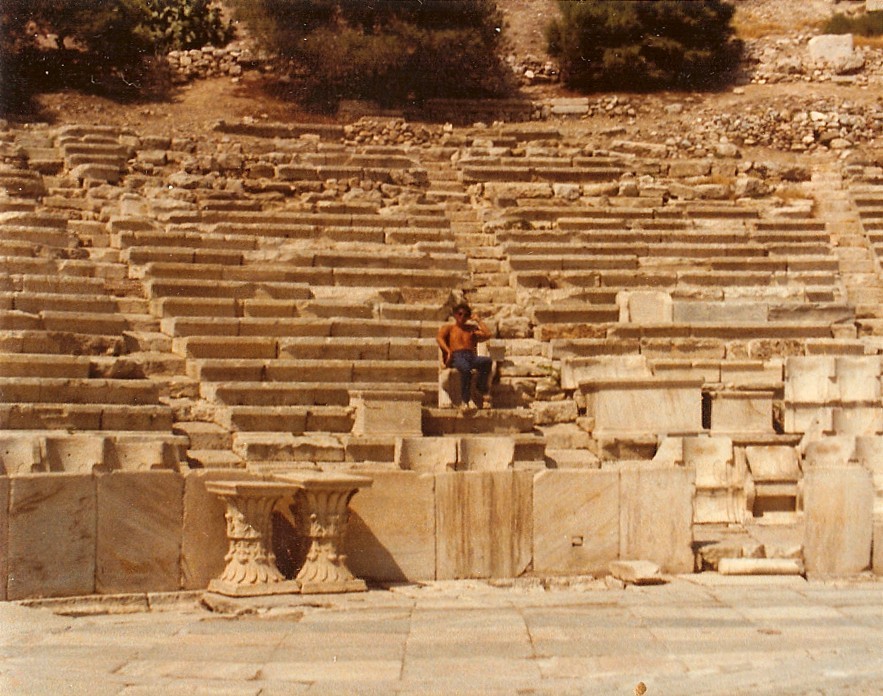 most important seat in the house |
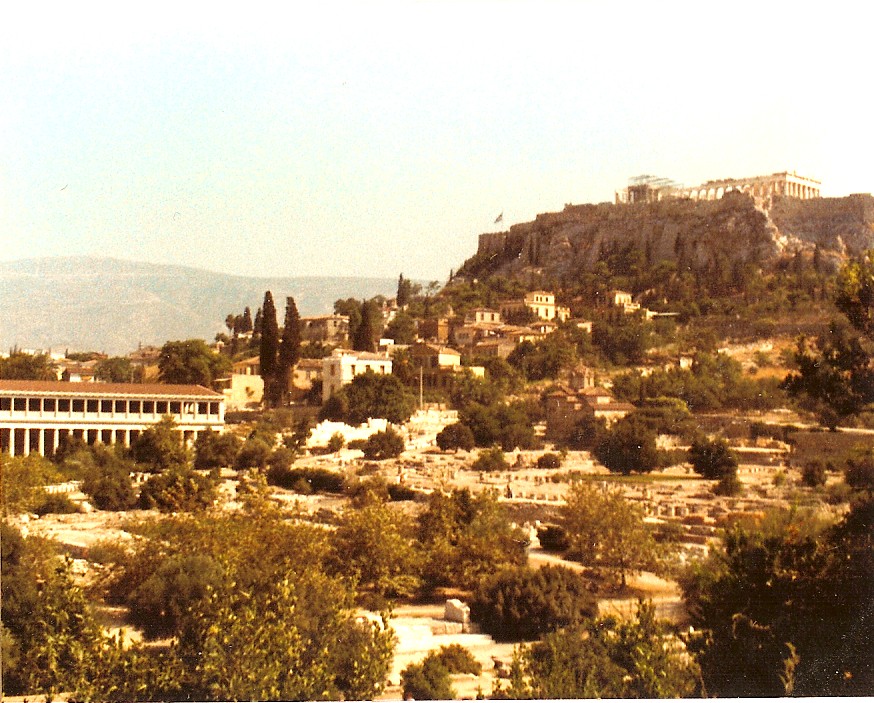 agora, with the stoa of attalos |
A pair of German boys (late teens?) joined us in the theatre. They were blond, darkly tanned and very attractive. I had already taken off my shirt off since it was warm (85°F we learned later -- no wonder Greeks take a siesta - ypnakos - in the early afternoon), but they were even more comfortable than I, wearing only shorts. I don't speak much German and they had no English, so I just led one of them to the circular stone and, when I had him positioned, said "Sprich!". When he shyly uttered "Hallo", the look on his face as the loud echo bounced back was pure "shock and awe" (he held his ears like Edvard Munch's screamer). He and his friend entertained each other, and us, for some time with that acoustic effect.
We next walked over the hill of the acropolis to the ancient agora, "Museo extra pay," said the attendant -- we finally figured out it cost more to go to the museum. We mostly wanted to see the Hephaesteion, which turned out to be very cool in both senses of the word. This temple used to be called the Theseion, repeating a Byzantine myth that Theseus was buried there. There was a pack of very slim dogs gathered nearby (the only ones we had seen - we learned later that all the dogs had been eaten during the German occupation of WWII). They seemed to be guarding the Temple, while wagging their tails at the site of us. We headed back to Amalias and our hotel via Ermou, then Mitropoleos. We were both getting footsore and thirsty so we stopped at a sidewalk cafe and had a beer. Got back to our hotel about 4:45. There are many more pictures of the Stoa here and the temple of Hephaestus here
We had a nap, wrote a few postcards, then went to dinner. Ate with Verlie Kimber and Marge Chapman, two ladies from Montreal. We had a good dinner with stuffed tomatoes and lamb chops.
That night the group went on a Key Tour to the Sound and Light show at the Acropolis. We enjoyed the show, but getting to our bus was a different matter entirely. It was an incredible crush, we couldn't find our driver and guide (George and Nick), some of us got on the wrong bus (with a bunch of French people who were going someplace to dinner). Karen and I decided to hell with it, skipped the Greek dancing part of the show and walked back along Amalias to the Oasis where had a final beer in Athens. A better ending anyway, we thought.
